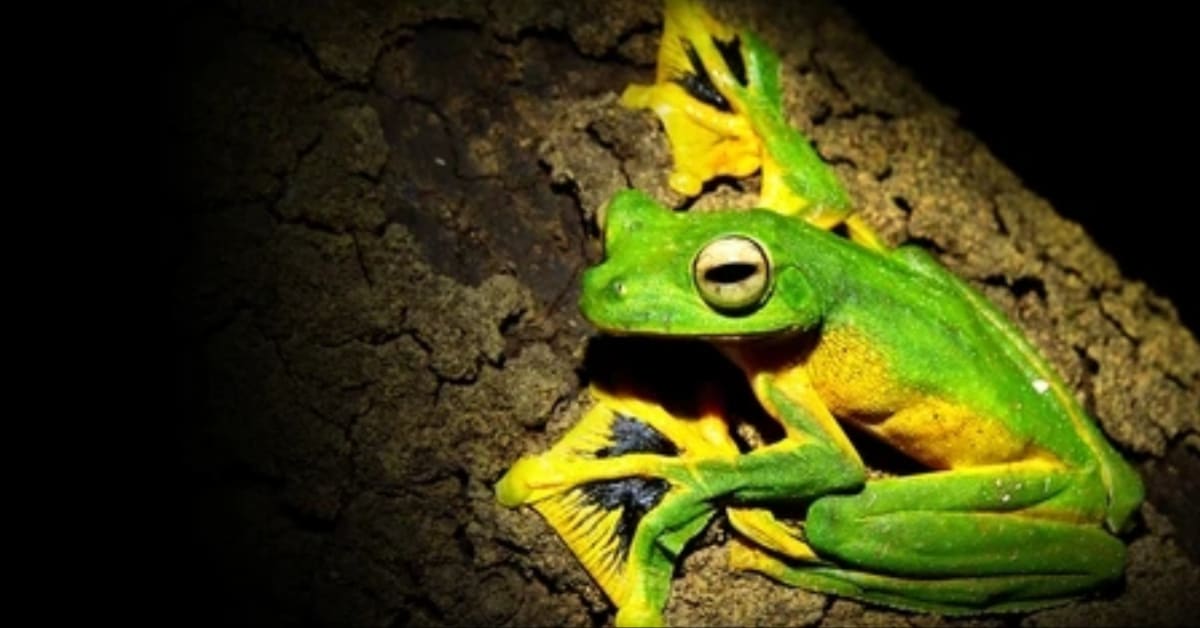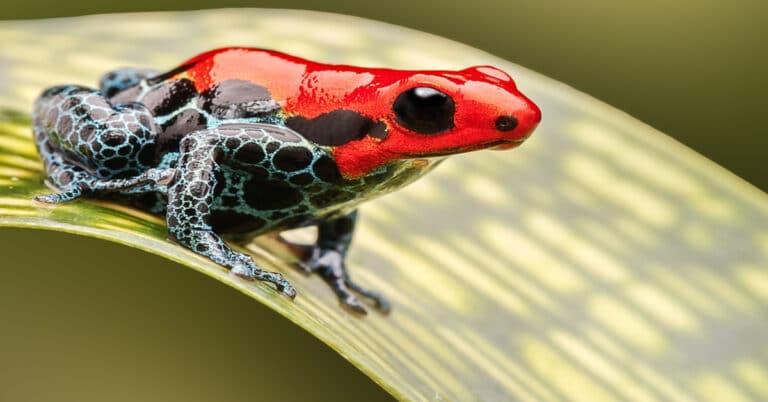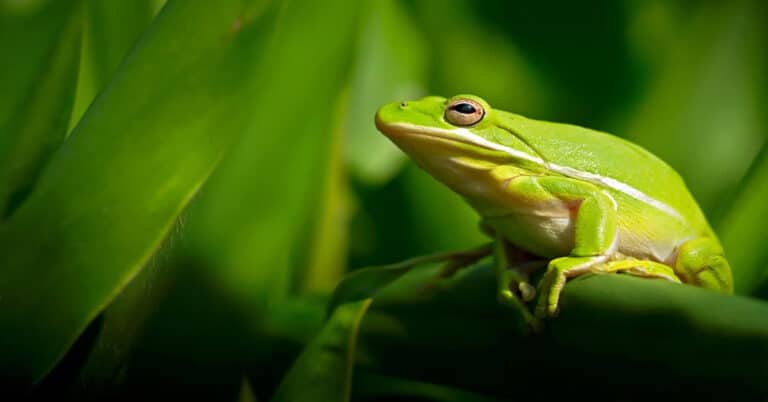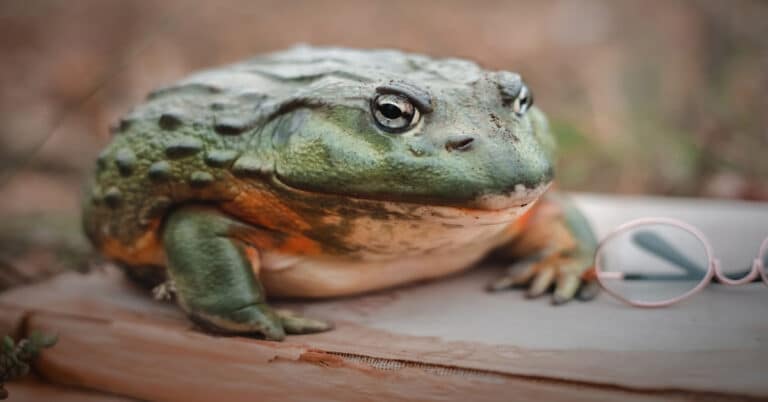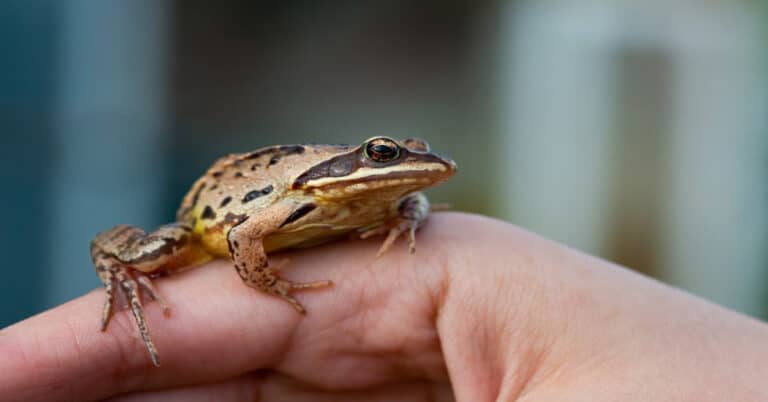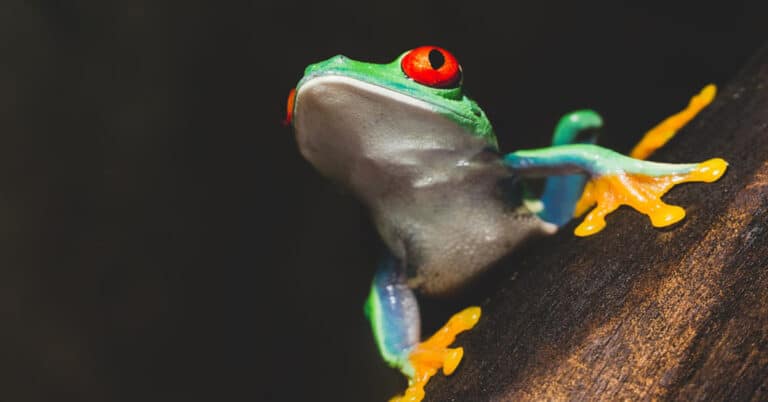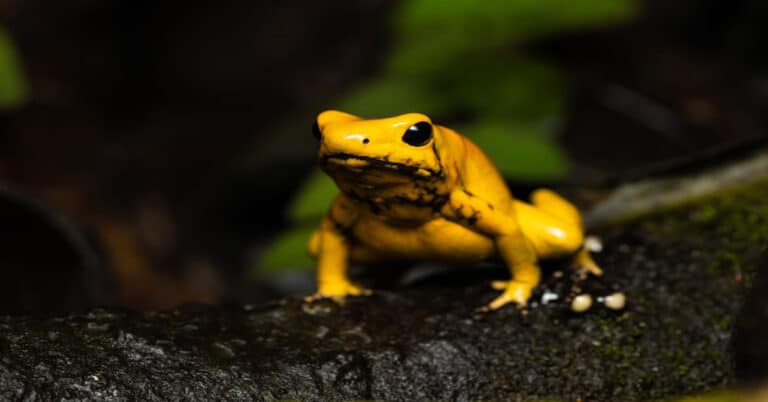Types Of Tree Frog – 15 Most Beautiful In The World
Roughly 400 million years ago the first four-legged fish swam out of the ocean and walked onto land, breathing oxygen from our atmosphere for the very first time. These animals became the ancestors of all land animals today, including humans, and including amphibians.
The oldest fossil of a frog ever found dates back 250 million years ago at the end of the Permian period. This frog went by the name of Triadobatrachus. It had a tail, and it couldn’t use its hind legs to jump like modern frogs and toads of today.
Unfortunately, it’s difficult to tell exactly where they went from here, and it’s also unknown when frogs separated from toads. All we know is that they did.
Frogs have evolved into over 6,000 different species and subspecies today.
There are over 300 species of toads, and over 800 types of tree frogs, some of which we’ll be learning about in this piece. Of these 800-plus tree frogs, 30 live in the United States with roughly 600 spread throughout Central and South America.
Now before we get into this list, it’s important to know that female frogs are almost always bigger than males, and that is true to all of the frogs on this list; males are on the smaller end of the spectrum, while females are on the larger end.
This is due to the fact that females need that extra size to carry their young, which has become a very common evolutionary trait for animals that lay eggs.
Being amphibians, frogs are cold blooded, and they absorb everything around them through their skin, including oxygen, water, and toxins.
Frogs feed on a wide variety of insects and arachnids such as mites, spiders, flies of all sorts, roaches, crickets and grasshoppers, a diversity of worms, katydids, snails, slugs, and even smaller frogs.
Some frogs can also eat small mammals such as mice.
Okay, now that you’ve gotten a small background on these amazing creatures, let’s get into our list of 15 types of the most beautiful tree frogs in the world:
15 Types Of Tree Frog
1. Red-Eyed Tree Frog
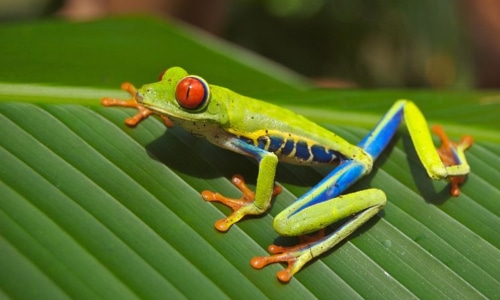
Perhaps the most commonly known tree frog in the world today, the red-eyed tree frog inhabits lowland tropical and neotropical rainforests with high humidity and warm temperatures in Central and South America, often near water sources.
Red-eyed tree frogs span from Mexico, primarily southern Mexico, to Panama, and as far south as Colombia, though they’re most prevalent in southern Mexico.
- Scientific Name: Agalychnis Callidryas
- Nocturnal?: Yes
- Size: Males 2-to-3 inches
- Lifespan: Up to 6 years
2. Lemur Leaf Frog
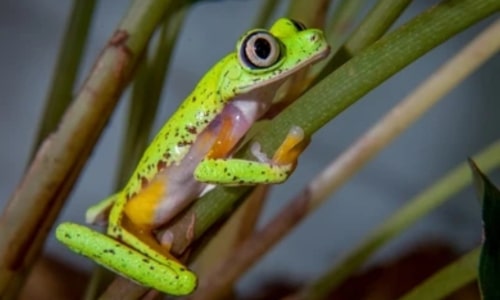
Lemur leaf frogs, one of the most beautiful types of tree frog in the world, live in forests sloping on mountainsides, as well as humid uplands and lowlands of Costa Rica, Panama, and Colombia.
Lemur leaf frogs are also commonly referred to as lemur tree frogs, or just simply lemur frogs.
- Scientific Name: Hylomantis Lemur or Agalychnis Lemur
- Nocturnal?: Yes
- Size: 1.2-to-2 inches
- Lifespan: 5-10 years
3. Tiger-Legged Monkey Tree Frog
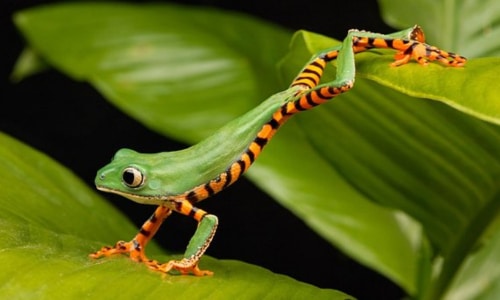
The mention for perhaps the most beautiful types of tree frogs on this list goes to the tiger-legged monkey tree frog.
The tiger-legged monkey tree frog, also known as the super tiger-leg monkey frog, tiger-striped monkey frog, or barred leaf frog, inhabits the tropical and subtropical forests of Colombia, Venezuela, Suriname, Guyana, Brazil, Bolivia, and Paraguay.
- Scientific Name: Phyllomedusa Hypochondrialis
- Nocturnal?: Both diurnal and nocturnal
- Size: 1.75-to-2.5 inches
- Lifespan: 4-5 years
4. Bird-Voiced Tree Frog
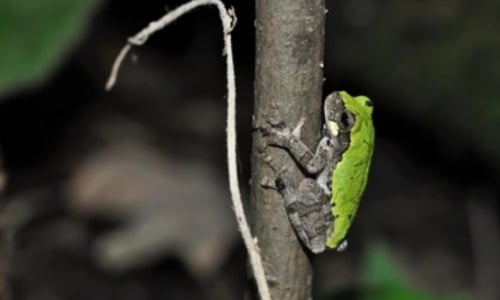
Another one of the most beautiful types of tree frogs in the world is the bird-voiced tree frog, a species that inhabits much of the southeastern US in states such as Kentucky, Louisiana, Florida, Alabama, Mississippi, Georgia, South Carolina, Tennessee, Oklahoma, and Arkansas, living in wooded swamps of these areas.
- Scientific Name: Dryophytes Avivoca or Hyla Avivoca
- Nocturnal?: Both diurnal and nocturnal
- Size: Up to 2 inches
- Lifespan: 2-3 years
5. Fringed Tree Frog
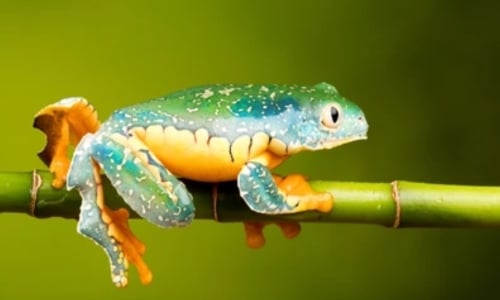
Expected to be many peoples favorite mention on our types of tree frogs list goes to the fringed tree frog.
Also known as the fringed leaf frog, these cold blooded creatures live in the Amazonian lowlands of Brazil, Colombia, Ecuador, and Peru in high canopy trees.
- Scientific Name: Cruziohyla Craspedopus or Ranoidea Craspedopus
- Nocturnal?: Yes
- Size: 2.1-to-3 inches
- Lifespan: 5-10 years
6. Morelet’s Tree Frog
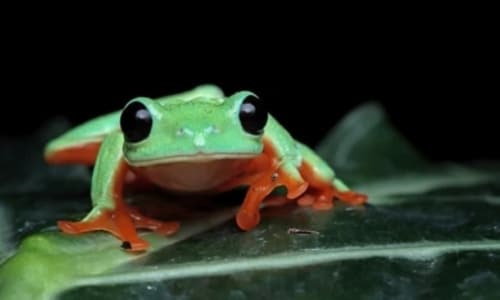
Also known as the black-eyed tree frog, Morelet’s tree frogs live in moist, humid subtropical lowlands, forests, and wetlands of Belize, El Salvador, Guatemala, Honduras, and Mexico.
- Scientific Name: Agalychnis Moreletii
- Nocturnal?: Yes
- Size: 2-to-2.5 inches
- Lifespan: Up to 5 years
7. Gliding Tree Frog
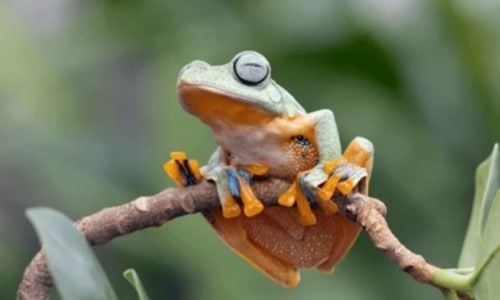
Also known as the gliding leaf frog, gliding tree frogs live in tropical and subtropical wetlands of Colombia, Panama, Ecuador, and Costa Rica.
By now you can tell, there really are so many beautiful types of tree frogs in the world today, we’re so lucky we can observe and learn from them.
- Scientific Name: Agalychnis Spurrelli
- Nocturnal?: Yes
- Size: 1.9-to-2.8 inches
- Lifespan: 4-8 years
8. Vietnamese Mossy Frog
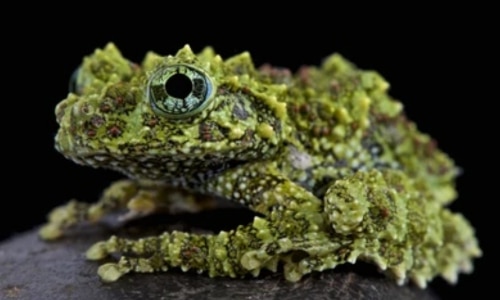
Though they don’t look much like the other types of tree frogs we’ve mentioned, we had to add these guys to it solely based on their appearance and habitat, being one of just two tree frogs on this list inhabiting Asia.
As the name suggests, Vietnamese mossy frogs inhabit much of Vietnam, primarily found in the northern region of the country by limestone cliffs and evergreen forests.
They can also be found in flooded caves and banks of rocky mountain streams at elevation as high as 3,280 feet.
Though they don’t look much like other types of tree frogs on this list, we had to add them to it solely based on their appearance and habitat.
- Scientific Name: Theloderma Corticale
- Nocturnal?: Yes
- Size: Up to 3.5 inches
- Lifespan: Up to 10 years
9. Orange-Eyed Tree Frog
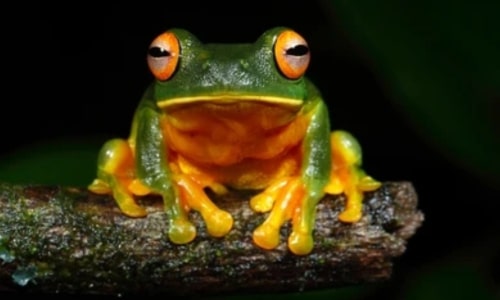
Also known as the Australian red-eyed tree frog, the orange-eyed tree frog lives in the rainforests of eastern Australia, primarily found in the Sclerophyll Forest.
- Scientific Name: Ranoidea Chloris or Litoria Chloris
- Nocturnal?: Yes
- Size: 2-to-3 inches
- Lifespan: Up to 5 years
10. Hourglass Tree Frog
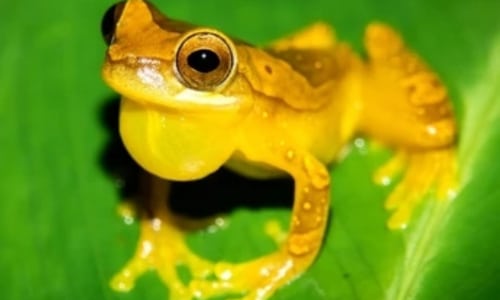
Also known as the pantless tree frog, the hourglass tree frog, like many other frogs on this list, inhabits Central America from southern Veracruz and northern Oaxaca, southern Chlapas, Tabasco, and Yucatan.
Hourglass tree frogs can also be found south of Mexico in northern Guatemala and Belize.
- Scientific Name: Dendropsophus Ebraccatus
- Nocturnal?: Yes
- Size: 0.94-to-1.34 inches
- Lifespan: 4-8 years
11. Mission Golden-Eyed Tree Frog
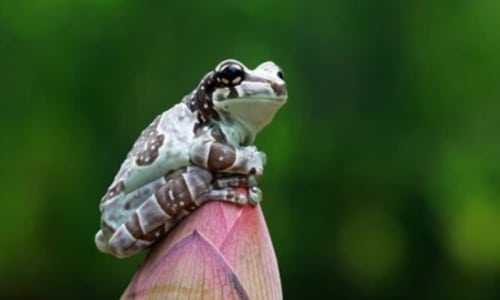
Also known as the Amazon milk frog or the blue milk frog, the mission golden-eyed tree frog is larger a species native to the Amazon rainforest in South America.
- Scientific Name: Trachycephalus Resinifictrix
- Nocturnal?: Yes
- Size: 3-to-3.5 inches
- Lifespan: 15-25 years
12. Gray Tree Frog
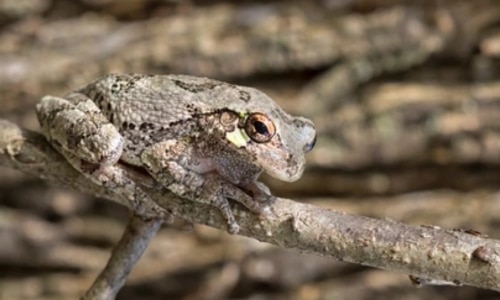
Also known as the eastern gray tree frog, northern gray tree frog, common gray tree frog, or tetraploid gray tree frog, this species is native to much of the eastern United States, spanning as far east as Florida and as far west as central Texas.
Gray tree frogs can also be found as far north as Southeastern Canada.
- Scientific Name: Hyla Versicolor or Dryophytes Versicolor
- Nocturnal?: Yes
- Size: 1.25-to-2.25 inches
- Lifespan: Roughly 7 years
13. Chinese Flying Frog
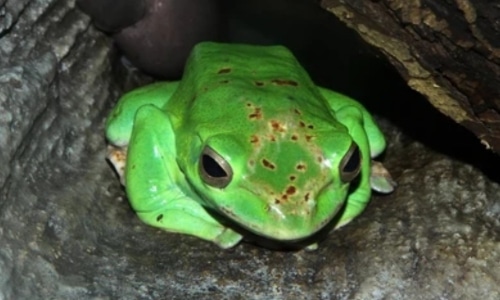
Also known as the Chinese gliding frog, Blandford’s whipping frog, or Denny’s whipping frog, Chinese flying frogs are native to Laos, Burma, Vietnam, and of course, China.
They inhabit tropical and subtropical lowland forests, and they can also be found by rivers, swamps, freshwater marshes, ponds, canals, and ditches of these areas.
- Scientific Name: Zhangixalus Dennysi or Rhacophorus Dennysi
- Nocturnal?: Yes
- Size: 3-4 inches
- Lifespan: Unknown
14. Barking Tree Frog
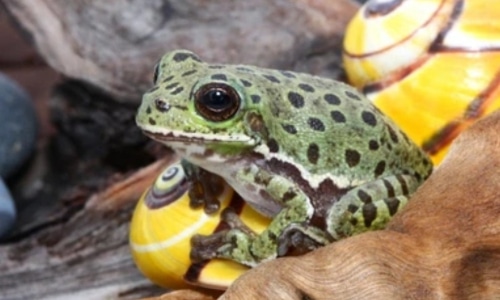
The barking tree frog can be found in the southeastern United States, found mostly in coastal areas from Delaware to southern Florida, Louisiana, Maryland, Kentucky, and Tennessee.
- Scientific Name: Dryophytes Gratiosus or Hyla Gratiosa
- Nocturnal?: Both diurnal and nocturnal
- Size: 2-2.8 inches
- Lifespan: Up to over 10 years
15. Australian Green Tree Frog
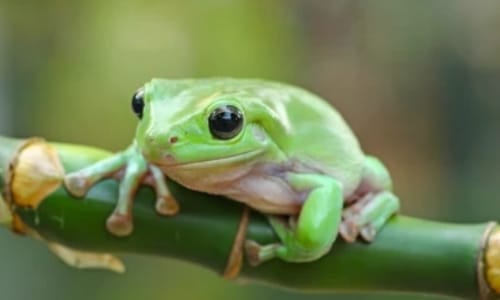
The last of the most beautiful types of tree frogs on this list goes to the Australian green tree frog.
Also known as the White’s tree frog or dumpy tree frog, Australian green tree frogs of course inhabit Australia, but can also be found in New Guinea and New Zealand.
Australian green tree frogs were also brought to some parts of the United States by people, though those populations are unfortunately believed to have died out.
- Scientific Name: Ranoidea Caerulea or Litoria Caerulea
- Nocturnal?: Both diurnal and nocturnal
- Size: 3-4.5 inches
- Lifespan: 16-21 years
Honorable Mention
White-Lipped Tree Frog
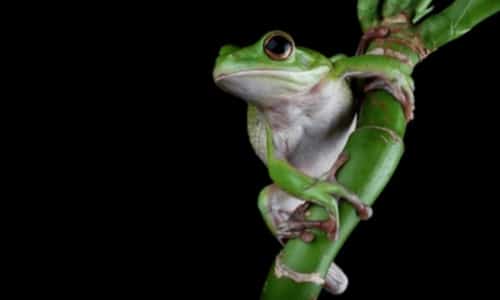
Of all 800-plus types of tree frogs in the world, white-lipped tree frogs are the biggest.
Also known as the New Guinea tree frog, giant tree frog, or Australian giant tree frog, these massive amphibians are native to Australia, New Guinea, and the Indonesian rainforest.
White-lipped tree frogs are found in lowland coastal areas of these places, restricted to areas below 1,200 meters in altitude.
Scientific Name: Nyctimystes Infrafrenatus or Litoria Infrafrenata
Nocturnal?: Partially diurnal, mostly nocturnal – can be found during daytime hours on cloudy days
Size: 4-5.5 inches
Lifespan: 10-20 years
If you enjoyed this piece on the most beautiful types of tree frogs in the world, feel free to share it on social media!
And, if you enjoyed this piece, be sure to check this one out we covered on the difference between frogs and toads.

I started writing in the fourth quarter of 2018. I wrote solely about MMA and boxing up until October of 2022, where I began writing about animals; primarily dangerous, venomous species. They’ve always fascinated me. Considering, my goal is to make a living by teaching people about these wonderful creatures. You can check out my Facebook page, where every article I’ve ever written currently sits, or you can check out my Twitter page, where I’ve shared all of my animal pieces to date.

